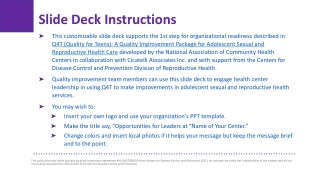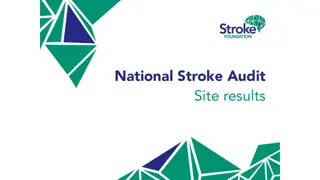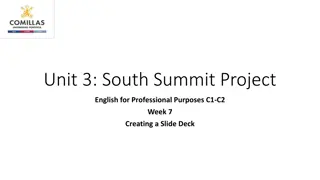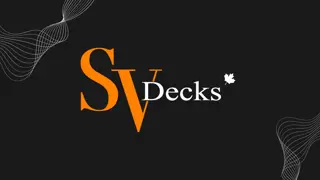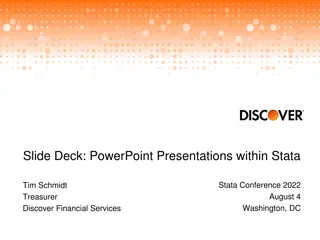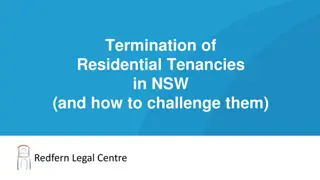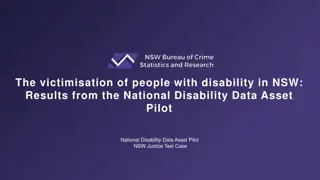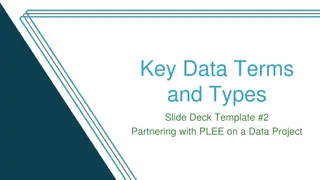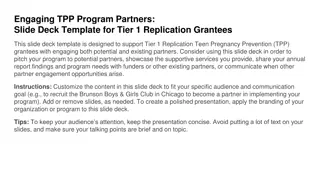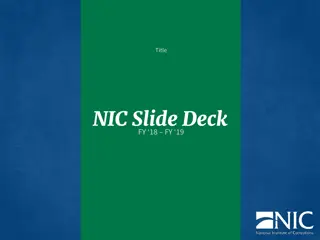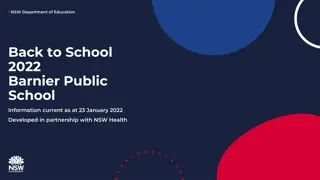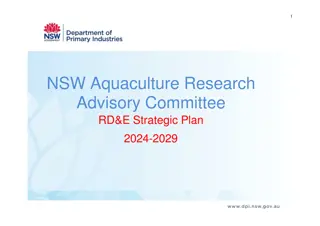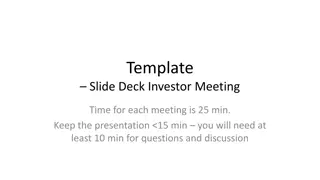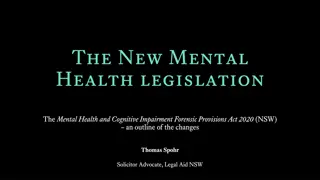
NSW 2019 Illicit Drug Report Findings Revealed
Explore the latest findings from the 2019 Illicit Drug Reporting System in New South Wales (NSW), funded by the Australian Government under the Drug and Alcohol Program. The data covers trends in drug use preferences, injection habits, high-frequency substance use, heroin consumption patterns, and the median price of heroin per cap and gram from 2000 to 2019. Gain insights into drug of choice, injection frequencies, high-frequency substance use, past six-month heroin consumption, and price trends in NSW.
Download Presentation

Please find below an Image/Link to download the presentation.
The content on the website is provided AS IS for your information and personal use only. It may not be sold, licensed, or shared on other websites without obtaining consent from the author. If you encounter any issues during the download, it is possible that the publisher has removed the file from their server.
You are allowed to download the files provided on this website for personal or commercial use, subject to the condition that they are used lawfully. All files are the property of their respective owners.
The content on the website is provided AS IS for your information and personal use only. It may not be sold, licensed, or shared on other websites without obtaining consent from the author.
E N D
Presentation Transcript
NSW findings from the 2019 Illicit Drug Reporting System Funded by the Australian Government under the Drug and Alcohol Program
Figure 1: Drug of choice, NSW, 2000-2019 100 90 81 80 % NSW IDRS participants 70 62 60 57 50 40 30 26 25 20 10 10 6 3 0 Heroin Any Methamphetamine Morphine Cocaine Cannabis Note. Substances listed in this figure are the primary endorsed; nominal percentages have endorsed other substances. Data labels have been removed from figures with small cell size (i.e. n 5 but not =0). *p<0.050; **p<0.010; ***p<0.001 for 2018 versus 2019.
Figure 2: Drug injected most often in the past month, NSW, 2000-2019 100 90 80 79 % NSW IDRS participants 70 62 60 57 50 40 32 32 30 20 10 5 9 0 Heroin Any Methamphetamine Morphine Cocaine Methadone Note. Substances listed in this figure are the primary endorsed; nominal percentages have endorsed other substances. Data labels have been removed from figures with small cell size (i.e. n 5 but not =0). *p<0.050; **p<0.010; ***p<0.001 for 2018 versus 2019.
Figure 3: High frequency (weekly) substance use in the past six months, NSW, 2000-2019 100 85 90 80 72 % NSW IDRS participants 70 64 60 54 58 54 47 50 49 40 30 20 11 5 10 3 0 Heroin Non-prescribed morphine Cannabis Crystal methamphetamine Powder methamphetamine Note. These figures are of the entire sample. Data labels have been removed from figures with small cell size (i.e. n 5 but not =0). *p<0.050; **p<0.010; ***p<0.001 for 2018 versus 2019.
Figure 4: Past six month use and frequency of use of heroin, NSW, 2000-2019 100 180 180 90 160 93 83 82 80 % NSW IDRS participants 140 70 120 120 60 Median days 100 96 50 80 40 60 30 40 20 20 10 0 0 % used in past 6 months Median days used Note. Median days computed among those who reported recent use (maximum 180 days). Median days rounded to the nearest whole number. Data labels have been removed from figures with small cell size (i.e. n 5 but not =0). *p<0.050; **p<0.010; ***p<0.001 for 2018 versus 2019.
Figure 5: Median price of heroin per cap and gram, NSW, 2000-2019 450 400 400 350 350 Median price ($) 300 250 220 200 150 100 50 50 50 50 0 Cap Gram Note. Among those who commented. Price for a gram of heroin was not collected in 2000. Data labels have been removed from figures with small cell size (i.e. n 5 but not =0). *p<0.050; **p<0.010; ***p<0.001 for 2018 versus 2019.
Figure 6: Current perceived purity of heroin, NSW, 2000-2019 100% 8 8 8 9 10 10 10 10 11 11 12 12 13 13 14 16 90% 29 34 80% % of those who commented 28 47 39 40 27 70% 35 41 36 43 39 43 44 47 39 47 64 60 63 60% 50% 49 34 40% 53 36 34 38 35 37 39 30% 40 39 37 37 33 37 34 33 20% 21 25 21 27 22 21 10% 17 15 15 13 12 12 12 11 10 10 10 10 9 9 9 7 0% High Medium Low Fluctuates Note. The response Don t know was excluded from analysis. Data labels have been removed from figures with small cell size (i.e. n 5). *p<0.050; **p<0.010; ***p<0.001 for 2018 versus 2019
Figure 7: Current perceived availability of heroin, NSW, 2000- 2019 100% 7 8 8 7 8 11 9 10 11 13 8 13 13 12 14 15 13 90% 16 14 % of those who commented 25 80% 26 33 37 37 33 40 37 70% 38 26 34 37 32 32 45 42 38 46 46 60% 39 50% 91 40% 64 30% 59 57 56 56 54 52 52 52 52 51 50 50 46 43 44 20% 39 38 32 10% 0% Very easy Easy Difficult Very difficult Note. The response Don t know was excluded from analysis. Data labels have been removed from figures with small cell size (i.e. n 5). *p<0.050; **p<0.010; ***p<0.001 for 2018 versus 2019.
Figure 8: Past six month use of any methamphetamine, powder, base, and crystal, NSW, 2000-2019 100 90 % NSW IDRS participants 80 76 76 74 70 60 50 40 40 32 30 23 20 11 9 14 13 8 10 0 Speed Base# Crystal Any Methamphetamine Note. #Base asked separately from 2001 onwards. Any methamphetamine includes crystal, powder, base and liquid methamphetamine combined. Figures for liquid not reported historically due to small numbers, however in 2018 4% of the NSW sample reported use of liquid amphetamine in the six months preceding interview. Data labels have been removed from figures with small cell size (i.e. n 5 but not =0). *p<0.050; **p<0.010; ***p<0.001 for 2018 versus 2019.
Figure 9: Frequency of use of any methamphetamine, powder, base, and crystal, NSW, 2000-2019 90 80 70 60 Median days 50 48 40 30 27 24 20 7 10 10* 4 0 Speed Base Crystal Any Methamphetamine Note. Median days computed among those who reported recent use (maximum 180 days). Median days rounded to the nearest whole number. Y axis reduced to 90 days to improve visibility of trends. Median days used base and crystal not collected in 2000-2001. Data labels have been removed from figures with small cell size (i.e. n 5). *p<0.050; **p<0.010; ***p<0.001 for 2018 versus 2019.
Figure 10: Median price of powder methamphetamine per point and gram, NSW, 2002-2019 800 700 600 Median price ($) 500 400 300 200 185 200 99 100 50 50 50 0 Point Gram Note. Among those who commented. Data labels have been removed from figures with small cell size (i.e. n 5). *p<0.050; **p<0.010; ***p<0.001 for 2018 versus 2019.
Figure 11: Current perceived purity of powder methamphetamine, NSW, 2002-2019 100% 2 3 5 7 8 8 8 10 10 10 10 13 15 16 17 18 90% 20 18 31 % Of those who commented 33 80% 20 11* 29 31 30 41 33 42 70% 34 41 46 33 30 34 29 15 60% 42 37 50% 29 25 18 45 29 38 40% 50 28 28 33 39 34 29 43 30% 38 42 20% 37 35 35 33 29 24 23 23 20 10% 19 17 15 15 11 9 9 0% High Medium Low Fluctuates Note. Methamphetamine asked separately for the three different forms from 2002 onwards. The response Don t know was excluded from analysis. Data labels have been removed from figures with small cell size (i.e. n 5). *p<0.050; **p<0.010; ***p<0.001 for 2018 versus 2019.
Figure 12: Current perceived availability of powder methamphetamine, NSW, 2002-2019 100% 0 6 7 7 8 9 10 10 12 13 19 90% 20 20 18 13 19 14 14 20 22 19 19 17 23 80% 25 % of those who commented 24 70% 40 13 31 42 37 39 60% 29 43 41 40 48 35 52 40 56 24 50% 42 35 40% 25 61 30% 50 45 45 44 41 20% 40 39 38 37 36 34 32 30 29 28 25 24 10% 0% Very easy Easy Difficult Very difficult Note. Methamphetamine asked separately for the three different forms from 2002 onwards. The response Don t know was excluded from analysis. Data labels have been removed from figures with small cell size (i.e. n 5). *p<0.050; **p<0.010; ***p<0.001 for 2018 versus 2019.
Figure 13: Median price of crystal methamphetamine per point and gram, NSW, 2001-2019 500 450 400 350 Median price ($) 300 250 250 250 200 150 100 50 50 50 50 0 Point Gram Note. Among those who commented. No data available for gram in 2001. Data labels have been removed from figures with small cell size (i.e. n 5). *p<0.050; **p<0.010; ***p<0.001 for 2018 versus 2019.
Figure 14: Current perceive purity of crystal methamphetamine, NSW, 2002-2019 100% 6 8 10 10 11 11 13 13 13* 14 15 17 17 90% 21 22 22 24 13 20 % of those who commented 8 17 80% 14 15 19 19 22 15 27 70% 18 18 28 16 42 22 23 46 31 23 60% 35 36 30 50% 32 43 42 30 27 33 36 27 29 40% 60 30% 53 49 46 46 20% 40 38 38 36 33 32 31 28 28 26 26 26 24 10% 0% High Medium Low Fluctuates Note. Methamphetamine asked separately for the three different forms from 2002 onwards. The response Don t know was excluded from analysis. Data labels have been removed from figures with small cell size (i.e. n 5). *p<0.050; **p<0.010; ***p<0.001 for 2018 versus 2019.
Figure 15: Current perceived availability of crystal methamphetamine, NSW, 2002-2019 100% 7 8 7 10 12 12 13 16 8 90% 15 80% % of those who commented 36 32 25 37 33 38 32 31 39 41 70% 46 37 39 37 45 46 33 60% 39 21 50% 27 40% 64 30% 61 58 57 57 56 23 53 52 49 48 48 46 44 42 20% 40 38 31 10% 0% Very easy Easy Difficult Very Difficult Note. Methamphetamine asked separately for the three different forms from 2002 onwards. The response Don t know was excluded from analysis. Data labels have been removed from figures with small cell size (i.e. n 5). *p<0.050; **p<0.010; ***p<0.001 for 2018 versus 2019.
Figure 16: Past six month use and frequency of use of cocaine, NSW, 2000-2019 100 90 90 80 % NSW IDRS participants 80 70 70 63 60 Median days 60 50 50 40 40 30 26 30 21 20 20 12 10 10 5 4 0 0 % Used Median days Note. Median days computed among those who reported recent use (maximum 180 days). Median days rounded to the nearest whole number. Y axis reduced to 90 days to improve visibility of trends. Data labels have been removed from figures with small cell size (i.e. n 5). *p<0.050; **p<0.010; ***p<0.001 for 2018 versus 2019.
Figure 17: Median price of cocaine per cap and gram, NSW, 2000-2019 450 400 % of those who commented 350 300 300 300 250 200 200 150 100 50 50 50 50 0 Cap Gram Note. Among those who commented. Data labels have been removed from figures with small cell size (i.e. n 5). *p<0.050; **p<0.010; ***p<0.001 for 2018 versus 2019.
Figure 18: Current perceived purity of cocaine, NSW, 2000- 2019 100% 6 6 7 7 8 8 11 11 12 12 12 13 13 14 17 18 19 90% 20 34 23 80% 13 30 18 % of those who commented 21 30 33 26 38 26 25 26 15 32 55 70% 47 29 27 40 60% 43 32 50% 40 37 44 38 25 39 36 43 49 40 40% 48 30 38 42 30% 33 38 32 46 20% 35 31 30 30 29 25 25 24 24 23 21 21 10% 19 17 14 11 11 8 0% High Medium Low Fluctuates Note. The response Don t know was excluded from analysis. Figures may not add up to 100% due to rounding. Data labels have been removed from figures with small cell size (i.e. n 5). *p<0.050; **p<0.010; ***p<0.001 for 2018 versus 2019.
Figure 19: Current perceived availability of cocaine, NSW, 2000-2019 100% 4 8 11 16 13 18 15 90% 21 19 25 24 21 29 25 26 21 28 27 80% 27 29 38 % of those who commented 31 70% 30 47 21 47 60% 43 34 38 46 61 36 46 49 50% 41 42 34 36 43 33 40% 69 30% 60 50 49 42 20% 38 38 38 38 33 33 32 31 30 30 28 26 25 23 21 10% 0% Very easy Easy Difficult Very difficult Note. The response Don t know was excluded from analysis; Data labels have been removed from figures with small cell size (i.e. n 5). *p<0.050; **p<0.010; ***p<0.001 for 2018 versus 2019.
Figure 20: Past six month use and frequency of use of cannabis, NSW, 2000-2019 100 180 90 160 % NSW IDRS participants 76 80 140 73 72 70 120 120 Median days 98 60 100 50 90 80 40 60 30 40 20 20 10 0 0 % Used Median days Note. Median days computed among those who reported recent use (maximum 180 days). Median days rounded to the nearest whole number. Data labels have been removed from figures with small cell size (i.e. n 5). *p<0.050; **p<0.010; ***p<0.001 for 2018 versus 2019.
Figure 21: Median price of hydroponic (a) and bush (b) cannabis per ounce and gram, NSW, 2003-2019 (A) Hydroponic cannabis (B) Bush cannabis 350 300 310 300 300 280* 250 250 225 250 200 Median price ($) 200 Median price ($) 200 150 150 100 100 50 50 20 20 20 20 20 20 0 0 Ounce Gram Ounce Gram Note. Among those who commented. From 2003 onwards hydroponic and bush cannabis data collected separately. Data labels have been removed from figures with small cell size (i.e. n 5). *p<0.050; **p<0.010; ***p<0.001 for 2018 versus 2019.
Figure 22: Current perceived potency of hydroponic (a) and bush (b) cannabis, NSW, 2004-2019 (A) Hydroponic cannabis (B) Bush cannabis 100% 100% 5 6 6 7 7 7 8 8 8 8 9 9 9 9 10 11 13 12 16 10 15 14 7 11 90% 90% 7 15 21 7 8 8 15 21 20 26 15 19 % of those who commented 17 20 % of those who commented 21 80% 80% 18 27 31 31 30 30 39 11 22 30 27 25 27 28 32 29 33 70% 70% 38 27 60% 60% 47 56 30 60 55 61 52 59 50% 50 50% 48 34 46 59 62 40% 40% 76 70 8 64 30% 61 60 58 61 30% 60 58 59 57 55 55 56 54 54 46 20% 40 20% 35 30 28 32 15 25 25 23 21 24 22 21 10% 10% 14 0% 0% High Medium Low Fluctuates High Medium Low Fluctuates Note. The response Don t know was excluded from analysis. Hydroponic and bush cannabis data collected separately from 2004 onwards. Data labels have been removed from figures with small cell size (i.e. n 5). *p<0.050; **p<0.010; ***p<0.001 for 2018 versus 2019.
Figure 23: Current perceived availability of hydroponic (a) and bush (b) cannabis, NSW, 2004-2019 (A) Hydroponic cannabis (B) Bush cannabis 100% 100% 5 8 8 9 8 9 11 12 13 16 90% 13 90% 21 28 23 20 26 27 32 31 29 17 25 38 % of those who commented 31 80% 32 80% 29 37 31 27 % of those who commented 38 37 43 36 35 19 31 35 45 70% 70% 44 44 40 43 60% 60% 32 46 28 32 40 37 30 63 50% 50% 25 31 30 40% 63 40% 74 55 38 69 68 65 65 66 64 30% 60 58 57 58 58 30% 55 37 49 48 44 20% 43 41 20% 39 38 38 35 34 33 33 32 28 10% 10% 20 18 0% 0% Very easy Easy Difficult Very difficult Very easy Easy Difficult Very difficult Note. The response Don t know was excluded from analysis. * Hydroponic and bush cannabis data collected separately from 2004 onwards. Data labels have been removed from figures with small cell size (i.e. n 5). *p<0.050; **p<0.010; ***p<0.001 for 2018 versus 2019.
Figure 24: Past six month use (prescribed and non-prescribed) and frequency of use of methadone, NSW, 2000-2019 180 180 100 180 90 160 80 140 % NSW IDRS participants 70 64 120 Median days 60 55 55 100 96 50 80 40 60 30 22 20 20 40 20 20 10 0 0 % Any use % Non-prescribed use Median days Note. Includes methadone syrup and tablets. Non-prescribed use not distinguished 2000-2002. Median days computed among those who reported recent use (maximum 180 days). Median days rounded to the nearest whole number. Data labels have been removed from figures with small cell size (i.e. n 5). *p<0.050; **p<0.010; ***p<0.001 for 2018 versus 2019.
Figure 25: Past six month use (prescribed and non-prescribed) and frequency of use of buprenorphine-naloxone, NSW, 2006- 2019 25 100 23 90 21 20 80 % NSW IDRS participants 70 14 15 60 Median days 50 11 10 40 30 30 5 20 13 10 0 0 % Any use % Non-prescribed use Median days Note. From 2006-2011 participants were asked about the use of buprenorphine-naloxone tablet; from 2012-2015 participants were asked about the use of buprenorphine-naloxone tablet and film; from 2016- 2018 participants were asked about the use of buprenorphine naloxone film only. Median days computed among those who reported recent use (maximum 180 days). Median days rounded to the nearest whole number. Y axis reduced to 25% and 100 days to improve visibility of trends. Data labels have been removed from figures with small cell size (i.e. n 5). *p<0.050; **p<0.010; ***p<0.001 for 2018 versus 2019.
Figure 26: Past six month use (prescribed and non-prescribed) and frequency of use of morphine, NSW, 2001-2019 50 90 45 80 40 70 % NSW IDRS participants 35 60 Median days 30 50 25 22 40 20 17 16 30 13 13 15 20 10 6 10 5 4 4 0 0 % Any use % Non-prescribed use Median days Note. Median days computed among those who reported recent use (maximum 180 days). Y axis reduced to 50% and 90 days to improve visibility of trend. Median days rounded to the nearest whole number. Data labels have been removed from figures in years 2017 and 2018 with small cell size (i.e. n 5). *p<0.050; **p<0.010; ***p<0.001 for 2018 versus 2019.
Figure 27: Past six month use (prescribed and non-prescribed) and frequency of use of oxycodone, NSW, 2005-2019 50 30 25 40 % NSW IDRS participants 20 30 Median days 15 22 21 20 17 16 16 10 14 8 10 5 5 1 0 0 % Any use % Non-prescribed use Median days (any) Note. From 2005-2015 participants were asked about any oxycodone; from 2016-2018, oxycodone was broken down into three types: tamper resistant ( OP ), non- tamper proof (generic) and other oxycodone . Median days computed among those who reported recent use (maximum 180 days). Median days rounded to the nearest whole number. Y axis reduced to 50% and 30 days to improve visibility of trends. Data labels have been removed from figures in years 2017 and 2018 with small cell size (i.e. n 5). *p<0.050; **p<0.010; ***p<0.001 for 2018 versus 2019.
Figure 28: Past six month use (prescribed and non-prescribed) and frequency of use of fentanyl, NSW, 2013-2018 25 90 80 20 70 % NSW IDRS participants 60 Median days 15 13*** 50 11* 40 9 10 30 7 6 20 5 10 6 6 5 0 0 2013 2014 2015 2016 2017 2018 2019 % Any use % Non-prescribed use Median days Note. Data on fentanyl use not collected from 2000-2012, and data on any non-prescribed use not collected 2013-2017. For the first time in 2018, use was captured as prescribed versus non-prescribed. Median days computed among those who reported recent use (maximum 180 days). Median days rounded to the nearest whole number. Y axis reduced to 25% and 90 days to improve visibility of trends. Data labels have been removed from figures in years 2017 and 2018 with small cell size (i.e. n 5). *p<0.050; **p<0.010; ***p<0.001 for 2018 versus 2019.
Figure 29: Past six month use of low-dose codeine (for non- pain purposes), NSW, 2013-2018 50 90 45 89.8 40 89.6 % NSW IDRS participants 35 89.4 30 25 89.2 22 20 89 15 15 12 11 88.8 9 10 88.6 5 0 88.4 2013 2014 2015 2016 2017 2018 2019 % Any use Note. Median days computed among those who reported recent use (maximum 180 days). Median days rounded to the nearest whole number. Y axis reduced to 50% and 90 days to improve visibility of trends. Differences between 2017 and 2018 data should be viewed with caution due to differences in the way questions were asked in 2018 (i.e. participants could only report use occurring in the last six months but prior to rescheduling in February 2018). Data labels have been removed from figures in years 2017 and 2018 with small cell size (i.e. n 5). *p<0.050; **p<0.010; ***p<0.001 for 2018 versus 2019.
Figure 30: Past six month use of other drugs, NSW, 2000-2019 95 95 100 97 80 65 % NSW IDRS participants 54 60 49** 48 37 22 40 41 15 20 10 13 5 10 4* 0 Benzodiazepines Steroids E-cigarettes Pharmaceutical stimulants Alcohol Antipsychotics Tobacco Note. Data labels have been removed from figures with small cell size (i.e. n 5 but not =0). Non-prescribed use is reported for prescription medicines (i.e., benzodiazepines, anti-psychotics, and pharmaceutical stimulants). Participants were first asked about steroids in 2010, anti-psychotics in 2011 and e-cigarettes in 2014. Pharmaceutical stimulants were separated into prescribed and non-prescribed from 2006 onwards, and benzodiazepines were separated into prescribed and non-prescribed in 2007; Data labels have been removed from figures in years 2017 and 2018 with small cell size (i.e. n 5). *p<0.050; **p<0.010; ***p<0.001 for 2018 versus 2019.
Figure 31: Use of opioids, stimulants and benzodiazepines on the day preceding interview, NSW, 2018 Note. This figure captures those who had used stimulants, opioids and/or benzodiazepines on the day preceding interview (2018: 84%; n=127 2019: 90%, n=136). The figure is not to scale.
Figure 32: Lifetime and past 12 month non-fatal overdose, NSW, 2000-2019 100 90 % NSW IDRS participants 80 70 60 50 40 30 27 20 25 19 10 0 Past year Note. Estimates from 2000-2005 refer to heroin and morphine non-fatal overdose only. Data labels have been removed from figures in years 2017 and 2018 with small cell size (i.e. n 5). *p<0.050; **p<0.010; ***p<0.001 for 2018 versus 2019.
Figure 33: Take-home naloxone program and distribution, NSW, 2013-2019 100 96 92 91 90 80 % NSW IDRS participants 70 64 61 60 50 40 40 40 29 28 34 30 20 15 14 10 0 2013 2014 2015 2016 2017 2018 2019 Heard of naloxone Heard of take-home programs Trained in naloxone administration Heard of naloxone rescheduling Note. Data labels have been removed from figures in years 2017 and 2018 with small cell size (i.e. n 5). *p<0.050; **p<0.010; ***p<0.001 for 2018 versus 2019.
Figure 34: Borrowing and lending of needles and sharing of injecting equipment in the past month, NSW, 2000-2019 100 90 80 % IDRS participants 70 57 60 52 50 46 41 40 30 27 20 14 17 13 10 10 12 7*** 0 Borrowed needles Lent needles Shared other equipment Re-used own needle Linear (Lent needles) Note. Data collection for reused own needle started in 2008. Borrowed (receptive sharing): used a needle after someone else. Lent (distributive sharing): somebody else used a needle after them. Data labels have been removed from figures in years 2017 and 2018 with small cell size (i.e. n 5). *p<0.050; **p<0.010; ***p<0.001 for 2018 versus 2019.
Figure 35: Injection-related issues in the past month, NSW, 2019 50 46 45 40 % NSW IRDRS Participants 35 30 25 23 25 20 15 14 15 10 10 5 0 Artery injection Nerve damage Skin abscess or cellulitis Blood clot (thrombophlebitis) Dirty hit Any injection related problem Note. Stacked bar graph of % who self-reported a mental health problem, disaggregated by the percentage who reported attending a health professional versus the percentage who have not. Data labels have been removed from figures in years 2017 and 2018 with small cell size (i.e. n 5). *p<0.050; **p<0.010; ***p<0.001 for 2018 versus 2019.
Figure 36: Self-reported mental health problems and treatment seeking in the past six months, NSW, 2004-2019 100 90 80 % NSW IDRS participants 70 60 50 40 20 13 18 14 12 17 6 12 12 9 13 15 30 11 6 7 20 34 33 32 32 30 30 30 30 29 29 29 27 25 23 23 22 10 0 Attendance No attendance Note. Stacked bar graph of % who self-reported a mental health problem, disaggregated by the percentage who reported attending a health professional versus the percentage who have not. Data labels have been removed from figures in years 2017 and 2018 with small cell size (i.e. n 5). *p<0.050; **p<0.010; ***p<0.001 for 2018 versus 2019.
Figure 37: Self-reported criminal activity in the past month, NSW, 2000-2019 100 90 80 % NSW IDRS participants 70 60 58 50 46 41 40 37 31 30 28 26 23 25 20 10 9 5 4 9 6 0 Property crime Drug dealing Fraud Violent crime Any crime Note. Any crime comprises the percentage who report any property crime, drug dealing, fraud and/or violent crime in the past month. Data labels have been removed from figures in years 2018 and 2019 with small cell size (i.e. n 5). *p<0.050; **p<0.010; ***p<0.001 for 2018 versus 2019.


